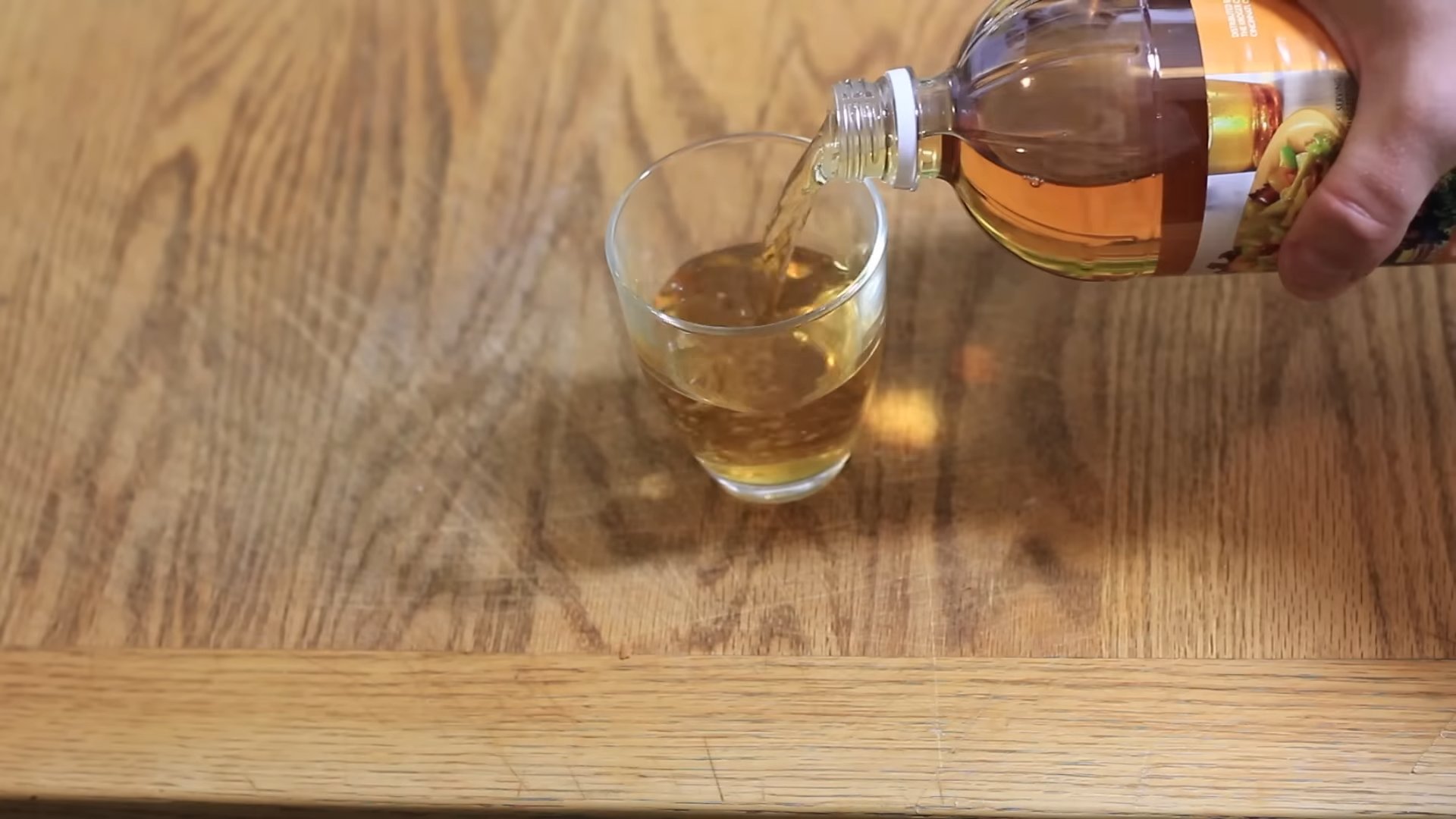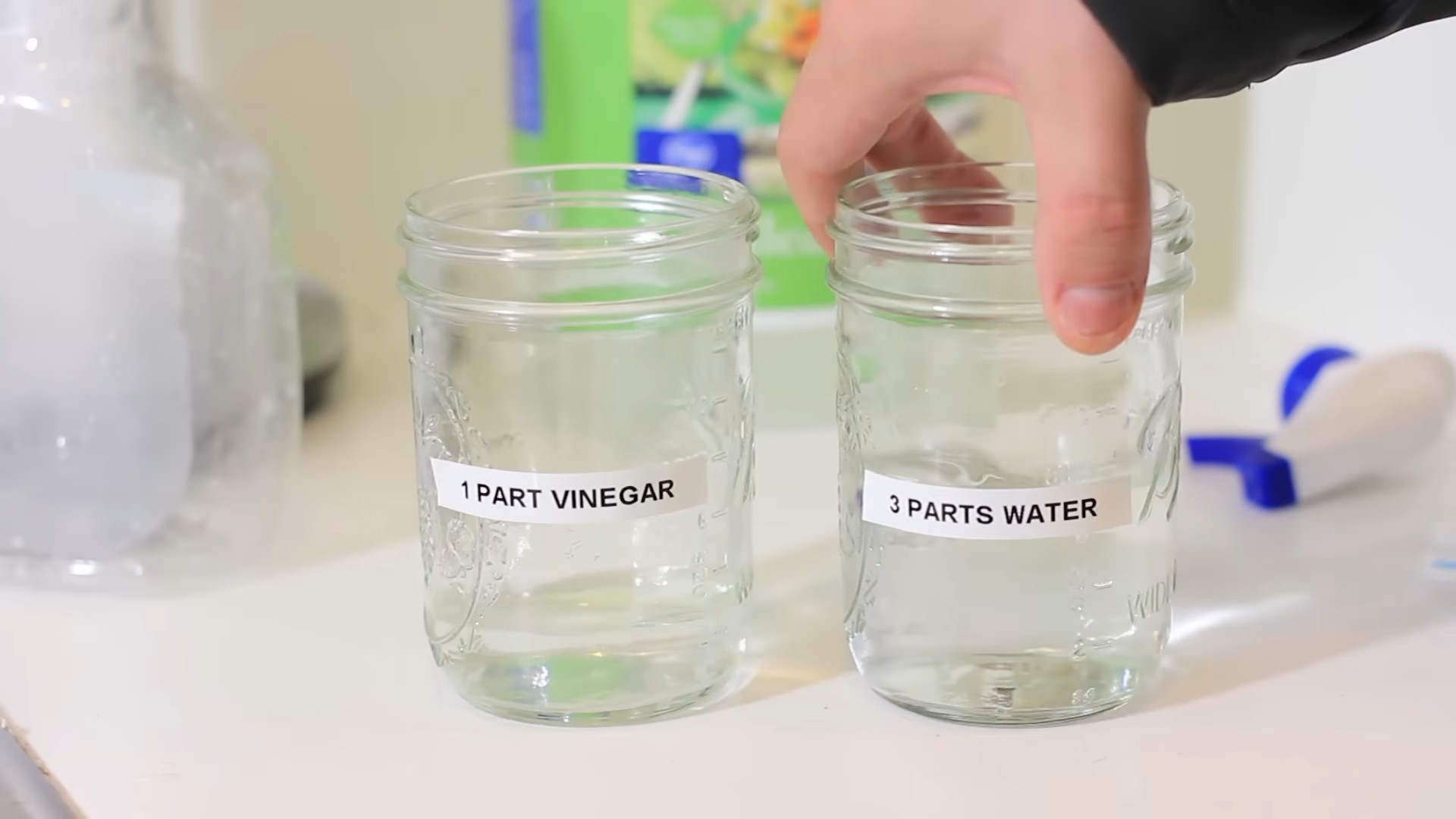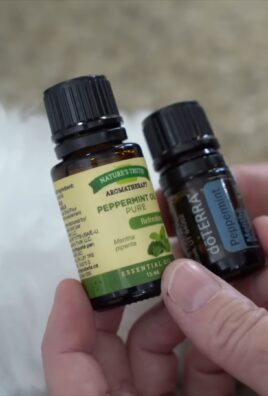Vinegar hacks are about to become your new best friend in the home! Seriously, who knew this humble kitchen staple could be such a powerhouse? I’m constantly amazed by the sheer versatility of vinegar, and I’m excited to share some incredible DIY tricks that will save you both time and money.
For centuries, vinegar has been more than just a condiment. From ancient civilizations using it for medicinal purposes to its role in preserving food, vinegar boasts a rich history. Think about it – our grandmothers probably knew secrets about vinegar that we’re only just rediscovering! It’s a testament to its enduring usefulness.
In today’s fast-paced world, we’re all looking for ways to simplify our lives and be more resourceful. That’s where these vinegar hacks come in. Whether you’re battling stubborn stains, trying to keep your garden thriving, or looking for eco-friendly cleaning solutions, vinegar offers a surprisingly effective and affordable alternative to many commercial products. I’m going to show you how to unlock the full potential of this everyday ingredient and transform your home maintenance routine. Get ready to be amazed!

Unlocking the Power of Vinegar: Time and Money-Saving DIY Hacks
Vinegar. It’s that humble bottle sitting in your pantry, often overlooked but brimming with potential beyond just salad dressing. I’m here to tell you, vinegar is a DIY superhero! It’s cheap, readily available, and incredibly versatile. Get ready to be amazed by these time and money-saving hacks that will transform the way you think about this everyday ingredient.
Cleaning Powerhouse: Vinegar as Your All-Purpose Cleaner
Forget those expensive, chemical-laden cleaners. Vinegar is a natural and effective alternative for tackling grime and dirt throughout your home.
Making Your All-Purpose Vinegar Cleaner
This is my go-to recipe, and it’s so simple!
1. Gather Your Supplies: You’ll need a spray bottle, white distilled vinegar, water, and optionally, a few drops of your favorite essential oil (lemon, lavender, or tea tree are great choices).
2. Mix the Solution: In the spray bottle, combine equal parts white distilled vinegar and water. For example, if you’re using a 16-ounce bottle, add 8 ounces of vinegar and 8 ounces of water.
3. Add Essential Oils (Optional): If you want to mask the vinegar scent and add a pleasant fragrance, add 10-15 drops of your chosen essential oil.
4. Shake Well: Secure the spray nozzle and shake the bottle thoroughly to combine the ingredients.
5. Start Cleaning! Now you’re ready to tackle those dirty surfaces.
Where to Use Your Vinegar Cleaner:
* Kitchen Counters: Spray and wipe down your kitchen counters to remove grease and grime. Be cautious on natural stone surfaces like granite or marble, as vinegar can etch them over time. Test in an inconspicuous area first.
* Bathroom Surfaces: Clean your bathroom sinks, toilets, and showers with vinegar. It’s great for removing soap scum and hard water stains.
* Floors: Mop your tile or linoleum floors with a diluted vinegar solution (1/2 cup vinegar per gallon of water). Again, avoid using vinegar on natural stone floors.
* Windows and Mirrors: Achieve streak-free shine by spraying windows and mirrors with your vinegar cleaner and wiping with a clean microfiber cloth.
* Coffee Maker: Descale your coffee maker by running a cycle with equal parts vinegar and water, followed by two cycles with plain water.
* Dishwasher: Pour a cup of vinegar into the bottom of your dishwasher and run a cycle to remove buildup and freshen the machine.
* Microwave: Heat a cup of vinegar and water in the microwave for a few minutes to loosen grime, then wipe clean.
Laundry Savior: Vinegar for Brighter, Softer Clothes
Vinegar isn’t just for cleaning your home; it can also work wonders in your laundry room!
Vinegar as a Laundry Booster
I’ve been using vinegar in my laundry for years, and I’m always amazed at the results.
1. Fabric Softener: Add 1/2 cup of white distilled vinegar to your washing machine’s fabric softener dispenser. It will naturally soften your clothes without the harsh chemicals found in commercial fabric softeners. Plus, it helps remove detergent residue.
2. Odor Eliminator: Vinegar is excellent at neutralizing odors in your laundry. Add 1 cup of vinegar to the wash cycle to remove musty smells, smoke odors, or pet odors.
3. Brightener: To brighten white clothes, soak them in a solution of 1 cup of vinegar per gallon of water for a few hours before washing.
4. Stain Remover: Vinegar can help remove certain stains, such as grass stains, coffee stains, and deodorant stains. Pre-treat the stain by applying vinegar directly to the affected area and letting it sit for 30 minutes before washing.
5. Lint Reducer: Adding 1/2 cup of vinegar to the rinse cycle can help reduce lint buildup on your clothes.
Garden Guru: Vinegar for a Thriving Garden
Believe it or not, vinegar can also be a valuable tool in your garden.
Vinegar’s Garden Benefits
I’ve discovered some amazing ways to use vinegar to keep my garden healthy and vibrant.
1. Weed Killer: Vinegar can be used as a natural weed killer. Pour undiluted white distilled vinegar directly onto weeds, being careful to avoid spraying desirable plants. The acetic acid in vinegar will dehydrate the weeds and kill them. Be cautious, as vinegar can also harm other plants if it comes into contact with their leaves or stems.
2. Soil Acidifier: Some plants, such as azaleas, rhododendrons, and blueberries, prefer acidic soil. You can lower the pH of your soil by watering it with a diluted vinegar solution (1 tablespoon of vinegar per gallon of water). Test your soil pH before and after applying vinegar to ensure you’re achieving the desired level.
3. Pest Control: Vinegar can help repel certain garden pests, such as ants, slugs, and snails. Spray a diluted vinegar solution (equal parts vinegar and water) around your plants to deter these pests.
4. Clean Clay Pots: Remove mineral deposits from clay pots by soaking them in a solution of equal parts vinegar and water.
5. Extend Cut Flowers’ Life: Add 2 tablespoons of vinegar and 1 teaspoon of sugar to a quart of water to help keep cut flowers fresh for longer.
Beauty Booster: Vinegar for Hair and Skin
Yes, you can even incorporate vinegar into your beauty routine!
Vinegar Beauty Secrets
I was skeptical at first, but now I swear by these vinegar beauty hacks.
1. Hair Rinse: After shampooing, rinse your hair with a diluted vinegar solution (1 tablespoon of apple cider vinegar per cup of water). This will help remove buildup, add shine, and balance your scalp’s pH. The smell dissipates as your hair dries.
2. Facial Toner: Diluted apple cider vinegar can be used as a natural facial toner. Mix 1 part apple cider vinegar with 2 parts water and apply to your face with a cotton pad after cleansing. It can help balance your skin’s pH, reduce acne, and minimize pores. Always do a patch test on a small area of your skin before applying it to your entire face, as it can be irritating for some people.
3. Sunburn Relief: Soothe sunburned skin by applying a cool compress soaked in a diluted vinegar solution (1 cup of vinegar per tub of cool water).
4. Foot Soak: Relieve tired, achy feet by soaking them in a warm water bath with 1/2 cup of vinegar. It can help soften calluses and kill bacteria.
Household Helper: Miscellaneous Vinegar Hacks
The versatility of vinegar knows no bounds! Here are a few more ways you can use it around your home.
More Vinegar Magic
These are just a few extra tricks I’ve picked up over the years.
1. Unclog Drains: Pour 1/2 cup of baking soda down the drain, followed by 1 cup of vinegar. Let it fizz for 30 minutes, then flush with hot water. This can help break down clogs and freshen the drain.
2. Remove Stickers and Labels: Soak a cloth in vinegar and apply it to the sticker or label. Let it sit for a few minutes, then peel off the sticker.
3. Clean Eyeglasses: Spray your eyeglasses with a diluted vinegar solution and wipe clean with a microfiber cloth.
4. Freshen Cutting Boards: Wipe your cutting boards with vinegar to kill bacteria and remove odors.
5. Remove Hard Water Stains: Soak items with hard water stains, like showerheads or faucets, in vinegar to dissolve the mineral deposits.
Important Considerations When Using Vinegar
While vinegar is a fantastic DIY tool, it’s essential to use it safely and effectively.
* Always dilute vinegar when using it for cleaning, gardening, or beauty purposes, unless otherwise specified.
* Avoid using vinegar on certain surfaces, such as natural stone (granite, marble), waxed wood, and aluminum.
* Test vinegar in an inconspicuous area before applying it to a large surface.
* Do not mix vinegar with bleach, as this can create toxic fumes.
* Store vinegar in a cool, dark place.
* Use white distilled vinegar for most cleaning and laundry purposes. Apple cider vinegar is often preferred for beauty applications.
* Be mindful of the smell. While the vinegar scent dissipates quickly, you can add essential oils to your cleaning solutions to mask the odor.
By incorporating these vinegar hacks into your daily routine, you can save time, money, and reduce your reliance on harsh chemicals. So, grab that bottle of vinegar and get ready to experience its amazing power!

Conclusion
So, there you have it! This simple yet incredibly effective vinegar hack is more than just a cleaning tip; it’s a game-changer for your home and your wallet. We’ve explored how this humble household staple can be transformed into a powerful cleaning agent, a natural deodorizer, and even a solution for stubborn stains. Why spend a fortune on specialized products filled with harsh chemicals when you can achieve superior results with something you likely already have in your pantry?
This isn’t just about saving money, although that’s certainly a significant benefit. It’s about embracing a more sustainable and eco-friendly lifestyle. By reducing your reliance on commercially produced cleaners, you’re minimizing your environmental impact and creating a healthier living space for yourself and your family. The versatility of vinegar is truly remarkable, and its ability to tackle a wide range of cleaning tasks makes it an indispensable tool in any home.
But don’t just take our word for it. The real magic happens when you put this vinegar hack to the test yourself. Experiment with different dilutions and applications to discover what works best for your specific needs. For instance, try adding a few drops of your favorite essential oil to the vinegar solution for a pleasant scent. Lavender, lemon, and tea tree oil are all excellent choices that not only smell great but also offer additional antibacterial and antifungal properties. You could also infuse your vinegar with citrus peels for a natural, refreshing fragrance and added cleaning power. Simply add the peels to a jar of vinegar and let it steep for a few weeks before straining and using.
Another variation to consider is using different types of vinegar. While white vinegar is the most common and versatile option, apple cider vinegar can also be used for certain cleaning tasks, particularly those involving delicate surfaces. Its milder acidity makes it less likely to damage or discolor sensitive materials. Cleaning with vinegar is a great way to save money and be more eco-friendly.
We encourage you to embrace this simple yet powerful DIY trick and experience the transformative effects for yourself. Once you’ve tried it, we’d love to hear about your results! Share your experiences, tips, and variations in the comments below. Let’s build a community of savvy homeowners who are committed to saving money, protecting the environment, and creating cleaner, healthier homes. Don’t hesitate to share your before-and-after photos or videos – we can’t wait to see how this vinegar hack has worked for you! Together, we can unlock the full potential of this amazing natural resource and revolutionize the way we clean our homes. So go ahead, give it a try, and discover the incredible power of vinegar!
Frequently Asked Questions (FAQ)
What kind of vinegar is best for cleaning?
White distilled vinegar is generally considered the best type of vinegar for cleaning. It has a high acidity level (around 5%) which makes it effective at killing bacteria, mold, and mildew. It’s also inexpensive and readily available. While apple cider vinegar can be used for some cleaning tasks, it’s not as strong as white vinegar and may leave a slight residue. Avoid using flavored vinegars, as they may contain sugars or other additives that can leave a sticky residue.
Is vinegar safe to use on all surfaces?
No, vinegar is not safe to use on all surfaces. Avoid using it on natural stone surfaces like granite, marble, and limestone, as the acidity can etch and damage them. It’s also not recommended for use on waxed wood furniture, as it can strip the wax finish. Be cautious when using it on electronics, as moisture can cause damage. Always test vinegar in an inconspicuous area before applying it to a larger surface.
Can I mix vinegar with bleach?
Absolutely not! Mixing vinegar with bleach creates chlorine gas, which is highly toxic and can be fatal. Never, ever mix these two substances. Always use vinegar and bleach separately and rinse thoroughly with water between applications. Safety should always be your top priority when cleaning.
How do I get rid of the vinegar smell after cleaning?
The vinegar smell typically dissipates within a few hours. To speed up the process, you can open windows and doors to ventilate the area. You can also add a few drops of essential oil to your vinegar solution to mask the smell. Citrus oils like lemon and orange are particularly effective at neutralizing the vinegar odor. Another option is to place a bowl of baking soda in the room to absorb the smell.
What are some other uses for vinegar besides cleaning?
Vinegar has a wide range of uses beyond cleaning. It can be used as a natural fabric softener, a weed killer, a stain remover, and even a hair rinse. It can also be used to unclog drains, remove hard water stains, and freshen up your dishwasher. The possibilities are endless!
How do I make a vinegar cleaning solution?
A basic vinegar cleaning solution can be made by mixing equal parts white vinegar and water in a spray bottle. For tougher cleaning jobs, you can use a stronger solution with more vinegar. You can also add a few drops of essential oil for fragrance and added cleaning power.
Can vinegar kill mold?
Yes, vinegar is effective at killing mold and mildew. Spray the affected area with undiluted white vinegar and let it sit for an hour before wiping it clean. For stubborn mold, you may need to repeat the process. Be sure to address the underlying cause of the mold growth to prevent it from returning.
Is vinegar safe for pets and children?
Vinegar is generally considered safe for pets and children when used properly. However, it’s important to keep vinegar solutions out of reach of children and pets to prevent accidental ingestion. If your pet or child ingests vinegar, it may cause mild stomach upset. Contact your veterinarian or doctor if you have any concerns.
How often should I clean with vinegar?
The frequency of cleaning with vinegar depends on your individual needs and preferences. For general cleaning, you can use vinegar once or twice a week. For tougher cleaning jobs, you may need to use it more frequently. Pay attention to your home and clean as needed to maintain a clean and healthy environment.





Leave a Comment